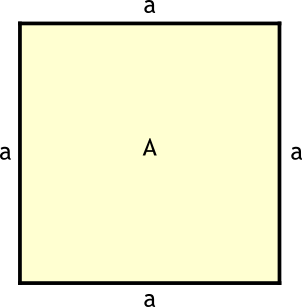As a math teacher with over 15 years of experience, I've seen firsthand how students often get tripped up by simple geometry concepts simply because they lack clear explanations. One of the most fundamental—yet crucial—skills in geometry is calculating the area of a square.
What is the area of a square?
Before diving into calculations, let’s clarify what "area" means.
- Area refers to the amount of space enclosed within a two-dimensional shape.
- For a square, this means the total space inside its four equal sides.
Key properties of a square
A square is a special type of quadrilateral with the following characteristics:
- All four sides are equal in length.
- All four angles are right angles (90°).
- Opposite sides are parallel.
- Diagonals bisect each other at 90° and are of equal length.
Because of these properties, calculating the area of a square is simpler than many other shapes.

The fundamental formula for the area of a square
The standard formula for the area of a square is:
Area = side × side= a²
Where a - the length of one side of the square.
Why does this formula work?
A square is essentially a special case of a rectangle where the length and width are identical. Since the area of a rectangle is given by:
A = length × width
For a square, since length = width = side, the formula reduces to:
A = a × a
Visualizing the area of a square
Sometimes, seeing a problem visually helps solidify understanding.
Imagine a square with a side length of 4 cm. If we divide it into a grid of smaller 1 cm × 1 cm squares, we can count the total number of small squares to find the area.

- Number of rows = 4
- Number of columns = 4
- Total squares = 4 × 4 = 16
Thus, the area is 16 cm², confirming our formula.
Alternative methods to calculate the area of a square
While A = a² is the most straightforward method, there are cases where you might need alternative approaches.
Using the diagonal of the square
If you only know the diagonal (d) of the square, you can still find the area.
The relationship between the side length and the diagonal is given by the Pythagorean theorem:
d = a \sqrt{2}
Solving for a:
a = \dfrac{d}{\sqrt{2}}
Substituting into the area formula:
A = {(\dfrac{d}{\sqrt{2}})}^2 = \dfrac{d^2}{2}
Example
A square has a diagonal of 10 cm. What is its area?
A = \dfrac{10^2}{2} = \dfrac{100}{2} = 50 cm^2
Using the perimeter
If you know the perimeter (P) of the square, you can find the side length first, then the area.
The perimeter of a square is:
P = 4a
So, the side length is:
a = \dfrac{P}{4}
Then, apply the area formula:
A = {(\dfrac{P}{4})}^2
Example
A square has a perimeter of 20 meters. What is its area?
a = \dfrac{20}{4} = 5cm
A = 5^2 = 25 cm^2
Common mistakes and how to avoid them
Even though the formula is simple, errors can still occur. Here’s what to watch out for:
-
Confusing area with perimeter
Area = space inside (a²).
Perimeter = total distance around (4a).
-
Forgetting to square the units
If the side is in meters, the area is in square meters (m²).
Example: 3 m × 3 m = 9 m², not 9 m.
-
Incorrectly using the diagonal
If given the diagonal, remember the formula is A = \dfrac{d^2}{2} = 5cm, not d².
Unit conversions for area calculations
Sometimes, you may need to convert between different units. Here’s a quick reference:
| Unit | Conversion to Square Meters (m²) |
|---|---|
| 1 cm² | 0.0001 m² |
| 1 ft² | 0.0929 m² |
| 1 in² | 0.000645 m² |
| 1 acre | 4046.86 m² |
Final thoughts
Mastering the area of a square is a foundational skill in geometry that extends to many real-life applications. Whether you're calculating the size of a room, planning a garden, or working on a construction project, knowing how to find the area efficiently is invaluable.
For quick and error-free calculations, an area of a square calculator is an excellent tool. But even without one, the formula A = a² is simple enough to apply manually.
Now that you’ve gone through this guide, you should feel confident in computing the area of any square—no matter the given information!
FAQ
❓ Can a square have the same area and perimeter?
Yes, but only if the side length is 4 units:
Area = 4 × 4 = 16.
Perimeter = 4 × 4 = 16.
❓ How is a square different from a rectangle?
- A square has all sides equal.
- A rectangle has only opposite sides equal.
❓ What if the side length is zero or negative?
- Zero: The area is zero (a point).
- Negative: Not physically meaningful in real-world measurements.